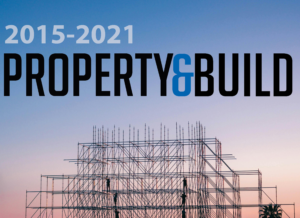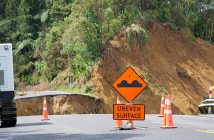The COVID-19 outbreak has prompted occupiers to accelerate the implementation of wellness measures in their workplaces while introducing additional hygiene and health-related steps, CBRE Global Research reports

Tens of millions of employees in Asia Pacific have been advised – and in some cases ordered – to work from home due to health and safety concerns.
Employees in affected markets who continue to work from the office have had to contend with an increased emphasis on hygiene.
Most workplaces and buildings have stepped up sanitisation protocols such as cleaning and disinfecting, while others have utilised more conspicuous measures including monitoring building entry and exit points and installing body temperature measuring equipment.
As employees spend much of their daily life in the office and possess far less control over this environment than they do over their own homes, property managers must take extra steps to prevent the spread of COVID-19 and other infections in the workplace.
In the longer-term, CBRE believes the outbreak will support the drive to enhance workplace wellness, which could generate stronger demand for properties that can provide high quality air, ventilation systems and other indoor environmental features.
Short-term impacts on the workplace
Employers have taken several steps to maintain business continuity and protect staff during the outbreak.
These include:
- Implementing flexible working policies allowing employees to work from home.
- Permitting flexible working hours to enable employees to travel to and from the office at non-peak times.
- Advising employees to take meals and breaks at staggered intervals to prevent cross infection.
- Encouraging teleconferences/videocalls instead of faceto-face meetings.
- Restricting employees and those family members with recent travel history in affected areas from entering the workplace.
On a more micro level, companies have strengthened sanitisation measures in the workplace to improve hygiene.
Measures implemented by landlords and facilities management teams have included:
- More intensive and regular cleaning, especially of shared equipment and amenities such as elevators.
- Provision of protective equipment such as hand sanitiser, disinfectant and masks.
- Setting up temperature control points and enhancing security at building entry and exit points.
- Installation of signs and other sources of information advising building and office occupants on how to maintain hygiene.
- Retention of emergency cleaning teams to disinfect areas where cases of infection have been reported.
Infection prevention and control in commercial buildings
- Clean all facilities before the working day begins and compile a schedule tracking building occupants’ working hours.
- Clean and sterilise central air conditioning vents and filters every day to maintain good indoor air quality and prevent cross-infection.
- Sterilise elevator buttons frequently. Limit the number of people taking the elevator at any one time.
- Encourage employees to take meals and breaks at staggered intervals to avoid excessive human-to-human contact. Advise canteens to provide meals in individual boxes instead of a shared or buffet format.
- Establish designated collection points for used items. Sterilise items before disposing of them.
- Monitor and sterilise all goods delivered to the building.
- Set up checkpoints at building entrances to measure the body temperature of employees and visitors. Log other important details such as visitors’ car registration numbers.
Traditional offices vs activity-based workplaces
The increasing popularity of unassigned seating and Activity-Based Workplaces (ABW) has led to some discussion around health-related risks – such as potential close contact with a large number of people and the need to sanitise office equipment – associated with these office configurations. The fact that ABW workplaces typically feature paired work and collaboration is of particular concern.
However, studies into how office configurations impact employee health have found no evidence that health risks are higher in ABW workplaces. In fact, the number of employee absences due to health reasons is higher among companies utilising traditional office formats than those with ABW.
Attention should nevertheless be paid to thoroughly cleaning and sanitising shared areas and amenities such as meeting rooms and canteens. Some companies have also opted to shift meetings online, rotate staff schedules and revert back to fixed desks as temporary solutions.
Although a leading Hong Kong microbiologist recently recommended non-mask wearers maintain a distance of at least 1.8 metres from one another to avoid potential transmission of the virus,2 this should not be a major concern in ABW offices, even though desk spacing can be as close as 1.4 metres.
CBRE believes that a well-designed and executed ABW office with high-quality cleaning offers better protection than traditional workplaces – many of which are often cleaned poorly and irregularly.
As employees in an ABW office are accustomed to sharing, they are also highly aware of the need to keep common areas and equipment clean. In contrast, sanitary practices in traditional offices are frequently poor, with fixed desks and areas often piled high with work-related and personal items, making them difficult to clean. ABW offices also typically have better facilities management systems and management in place to perform sanitisation.
What happens next?
Due to heightened concern around hygiene and health, CBRE expects many of the aforementioned measures to become permanent features in workplaces, even after the COVID-19 outbreak has been contained.
CBRE believes this will create further opportunities for office occupiers to test the feasibility of flexible working or agileworking in many markets. In recent months, the government and private sector have ordered or encouraged employees to work from home in order to limit social contact to slow the spread of COVID-19.
Many companies – particularly those whose employees require only a computer and internet connection to perform their duties – have found this experiment to be relatively successful. Leading tech companies asked staff to work from home for several weeks and were able to host client meetings and group discussions on video applications and productivity software platforms such as WeChat Work.
While there have been some reports of excessive monitoring of remotely-working employees, CBRE believes more companies are likely to accelerate the adoption of flexible and home-working polices in future.
This will intensify the discussion around the purpose of offices and the role they play in hosting and facilitating the three main types of work – NETwork (connecting with people), TEAMwork (collaborating and working together with others) and MEwork (concentrated and focused work performed alone).
At the same time, there still exist many challenges around home-working, with many companies’ tech platforms not yet ready to support most work activities remotely. In addition, some employees’ home environments are not conducive to work, while many managers have yet to switch to managing by performance rather than managing by presence. These and other issues will need to be addressed if these changes are to happen successfully.
Asset managers – particularly of properties that include shared amenities such as cafes, retail and agile space – will also need to augment existing hygiene policies to reassure tenants and employees. Features such as temperature checks at entry doors – introduced by many buildings since the outbreak – may become standard procedure during flu season. The complexity of facilities management required in an office building may eventually resemble that in a small shopping mall.
CBRE also expects indoor air quality – which has already been found to affect employee productivity – to climb up the landlord and occupier agenda.
Heating, Ventilation, and Air Conditioning Systems (HVAC) will need to be fitted with high quality filters to remove pollutants and bacteria and should be regularly cleaned and maintained. Water leaks will need to be reported and addressed immediately to minimise the growth of microorganisms.
The well standard
CBRE expects the growing emphasis on health and hygiene to help strengthen a culture of workplace wellness – a trend that has already gained considerable momentum in the real estate sector.
While there are many short-term and low-cost ways to enhance workplace wellness such as ensuring natural light at workstations, offering healthy food options and providing exercise opportunities, many companies have gone a step further and adopted the International WELL Building Institutes’ (IWBI) WELL Building Standard (WELL), which is the premier standard for buildings, interior spaces and communities seeking to implement, validate and measure features that support and advance human health and wellness.
WELL consists of more than 100 features across ten key concepts addressing the design and operation of buildings and how they impact and influence health and wellness related human behaviour.
Major cities in China lead the region in terms of the size of certified and pre-certified WELL office space, with Beijing, Hong Kong SAR and Shanghai each possessing in excess of 8 million sq. ft. of stock. Outside Greater China, Sydney and Melbourne are driving the trend.
The comparatively high volume of certified WELL stock in Chinese cities reflects developers’ growing focus on indoor environmental quality amid widespread awareness regarding air pollution. This trend is also picking up in Australia and other parts of Asia Pacific.
As occupiers place a stronger emphasis on building specifications as part of a stronger commitment to employee health and wellness, properties with sustainability and wellness features, particularly those related to indoor air quality, ventilation systems and other indoor environmental features to improve employee comfort, will attract stronger demand in the long term – a trend that could also hasten the development of more WELL-certified buildings.
WELL pays particular attention to indoor air quality, setting out specific requirements related to particulate matter and inorganic gases. Specifically, WELL advises that the amount of particulate matter under 2.5 micrometers should be less than 15 micrograms per cubic metre in indoor environments.
These standards can be met by installing high-quality HVAC systems. A study by the University of Minnesota Twin Cities found that some High Efficiency Particulate Air (HEPA) filters can filter 99% of pollutants under 0.1 micrometres. This may also help mitigate the spread of some viruses such as COVID-19.
CBRE expects investors to place a stronger focus on high quality properties with these attributes or incorporate sustainability and wellness criteria into their value-added strategy to ensure their portfolios align with this long-term trend.
This report was prepared by the CBRE Asia Pacific research team which forms part of CBRE Global Research – a network of preeminent researchers who collaborate to provide real estate market research and econometric forecasting to real estate.



